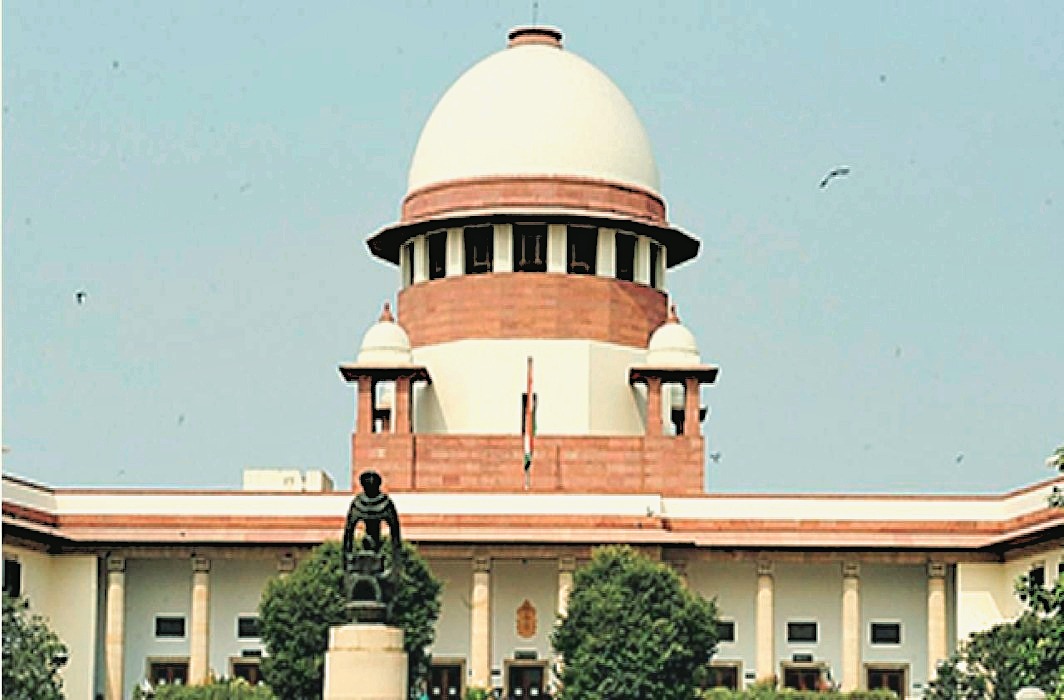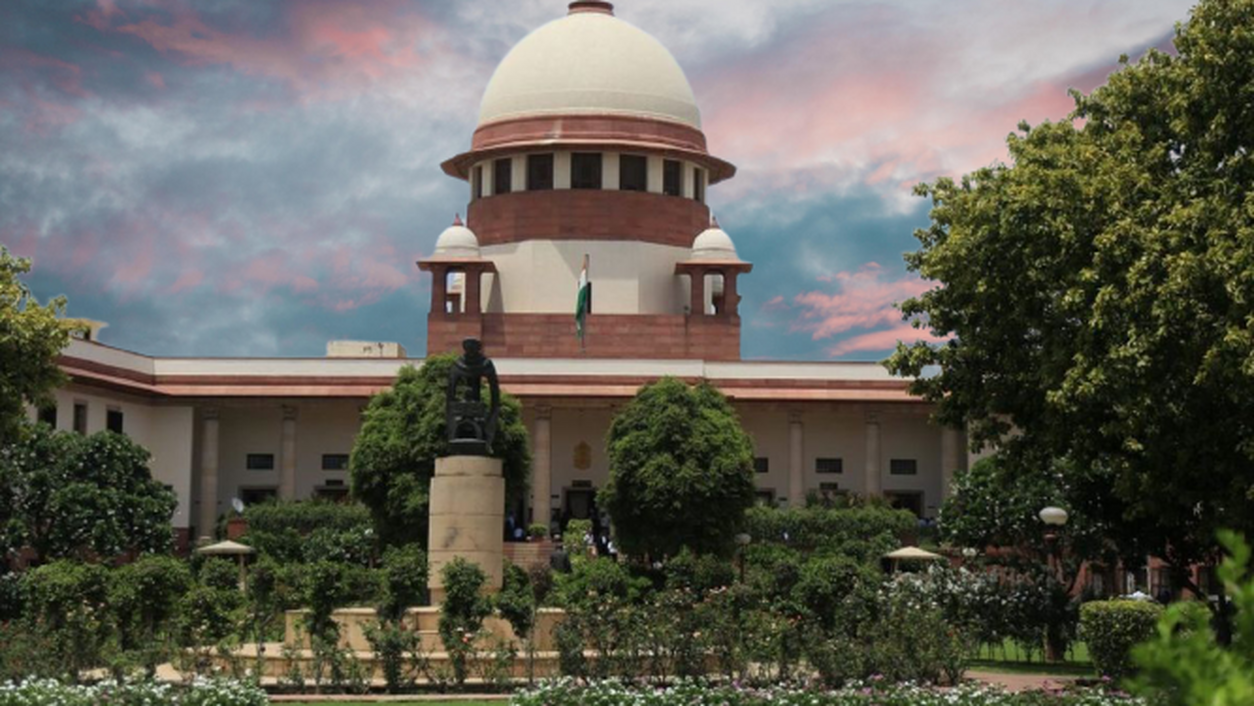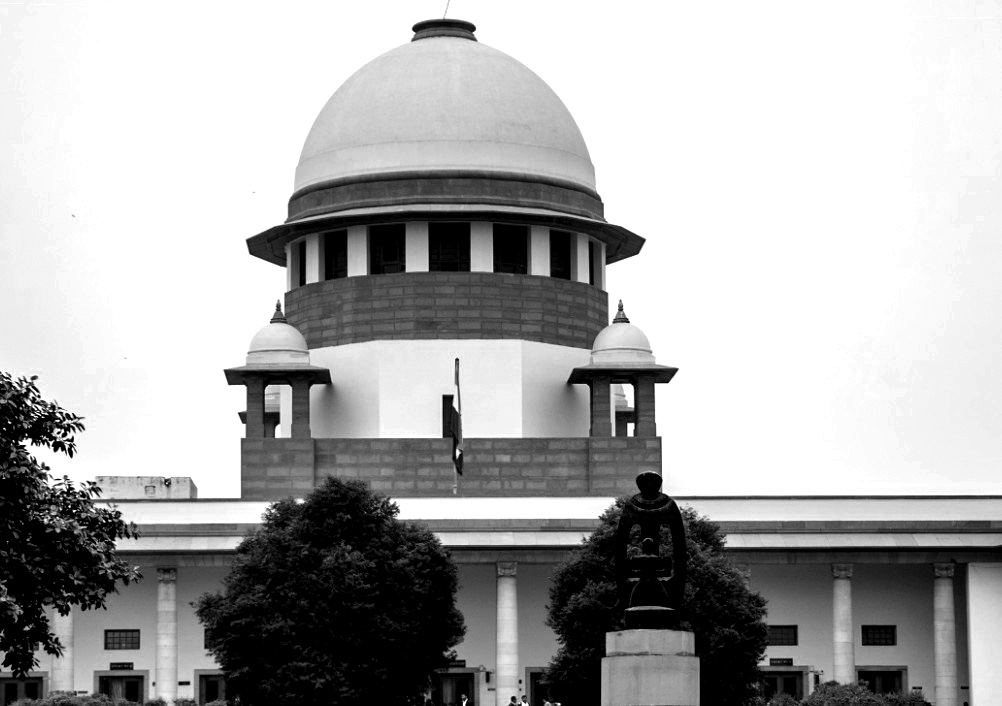‘EVMs are simple, secure and user-friendly’: Apex Court dismisses demand for 100% VVPAT slips verification; issues directives for sealing symbol loading units & verification of micro controllers
Justices Dipankar Datta & Sanjiv Khanna [26-04-2024]

Read Order: ASSOCIATION FOR DEMOCRATIC REFORMS v. ELECTION COMMISSION OF INDIA AND ANOTHER [SC- WRIT PETITION (CIVIL) NO. 434 OF 2023]
Tulip Kanth
New Delhi, April 26, 2024: The Supreme Court has rejected the pleas to revert to paper ballot voting system and initiate 100% verification of Voter Verifiable Paper Audit Trail (VVPAT) against the EVM outcomes. The Top Court has also directed that on completion of the symbol loading process in the VVPATs undertaken on or after May 1, 2024, the symbol loading units shall be sealed and secured in a container. The Top Court has also directed that the burnt memory/microcontroller be verified post the announcement of the results.
The Division Bench of Justice Dipankar Datta and Justice Sanjiv Khanna penned down separate but concurring judgments.
Due to the possibility of manipulating the EVMs, the petitioners approached the Top Court to instil confidence in the voters. It was urged on behalf of the petitioner – Association for
Democratic Reforms, that the Court should direct return to the paper ballot system or the printed slip from the Voter Verifiable Paper Audit Trail machine be given to the voter to verify, and put in the ballot box, for counting. It was also urged before the Court that direction be issued mandating that there should be 100% counting of the VVPAT slips in addition to electronic counting by the control unit.
Justice Khanna noted that time and again use of EVMs has been objected to and questioned, not by one but by all political parties and others. There have been several litigations in this Court and the High Courts, albeit the challenge to the use of EVMs has been rejected recording good grounds and reasons.
Penning down the many advantages of the EVM-VVPAT mechanism, he said, “Thus, it is clear that till the symbol loading into the VVPAT is done by using the symbol loading unit, the EVM is blank and has no data/particulars of political parties or candidates. One cannot ascertain and know which button/key in the ballot unit will be allocated to a particular candidate or a political party.”
The Bench did point out that in the 2019 Lok Sabha Elections, 20,687 VVPAT slips were physically counted, and except in one case, no discrepancy or mismatch was noticed. On verification, it was found that the discrepancy had arisen on account of failure of the presiding officer to delete the mock poll data. “While it is not possible to rule out human errors, paragraph 14.5 of Chapter 14 of the Manual on EVM and VVPATs deals with such situations and lays down the protocol which is to be followed”, it added.
It was also highlighted that the EVMs have been subjected to test by technical experts committee from time to time. These committees have approved and did not find any fault with the EVMs. The ‘M3’ EVMs currently in use are designed by engineers of BHEL and ECIL. These designs are vetted by the technical experts committee.
Further, acknowledging the right of voters to question the working of EVMs, which are but an electronic device that has a direct impact on election results, Justice Khanna stated that it is also necessary to exercise care and caution when aspersions are raised on the integrity of the electoral process.
“While we acknowledge the fundamental right of voters to ensure their vote is accurately recorded and counted, the same cannot be equated with the right to 100% counting of VVPAT slips, or a right to physical access to the VVPAT slips, which the voter should be permitted to put in the drop box”, he said.
As per the Top Court, giving physical access to VVPAT slips to voters is problematic and impractical. It will lead to misuse, malpractices and disputes. The Court was also not inclined to modify the directions to increase the number of VVPAT undergoing slip count as it would increase the time for counting and delay declaration of results. The manpower required would have to be doubled. The data and the results do not indicate
any need to increase the number of VVPAT units subjected to manual counting.
Furthermore, EVMs reduce paper usage and alleviate logistical challenges. They also provide administrative convenience by
expediting the counting process and minimizing errors.
In view of the fact that Rule 49MA of Conduct of Election Rules, 1961, permits the elector to raise a complaint if she/he is of the view that the VVPAT paper slip did not depict the correct candidate/political party she/he voted, the Court rejected the argument that any elector should be liberally permitted as a routine to ask for verification of vote.
Thus, to only further strengthen the integrity of the election process, the Bench issued the following directions:
- On completion of the symbol loading process in the VVPATs undertaken on or after 01.05.2024, the symbol loading units shall be sealed and secured in a container. The candidates or their representatives shall sign the seal. The sealed containers, containing the symbol loading units, shall be kept in the strong room along with the EVMs at least for a period of 45 days post the declaration of results. They shall be opened, examined and dealt with as in the case of EVMs.
- The burnt memory/microcontroller in 5% of the EVMs, that is, the control unit, ballot unit and the VVPAT, per assembly constituency/assembly segment of a parliamentary constituency shall be checked and verified by the team of engineers from the manufacturers of the EVMs, post the announcement of the results, for any tampering or modification, on a written request made by candidates who are at SI.No.2 or Sl.No.3, behind the highest polled candidate. Such candidates or their representatives shall identify the EVMs by the polling station or serial number. All the candidates and their representatives shall have an option to remain present at the time of verification. Such a request should be made within a period of 7 days from the date of declaration of the result. The District Election Officer, in consultation with the team of engineers, shall certify the authenticity/intactness of the burnt memory/ microcontroller after the verification process is conducted. The actual cost or expenses for the said verification will be notified by the ECI, and the candidate making the said request will pay for such expenses. The expenses will be refunded, in case the EVM is found to be tampered.
In his concurring opinion, Justice Datta mentioned that the petitioners’ apprehensions were misplaced as reverting to the paper ballot system, rejecting the inevitable march of technological advancement, and burdening the ECI with the onerous task of 100% VVPAT slips tallying would be a folly when the challenges faced in conducting the elections are of such gargantuan scale.
He also emphasized on the fact that the mere suspicion that there may be a mismatch in votes cast through EVMs, thereby giving rise to a demand for a 100% VVPAT slips verification, is not a sufficient ground for the present set of writ petitions to be considered maintainable.
“I also wish to observe that while maintaining a balanced perspective is crucial in evaluating systems or institutions, blindly distrusting any aspect of the system can breed unwarranted scepticism and impede progress”, Justice Datta asserted while further adding,“ I conclude with the hope and trust that the system in vogue shall not fail the electorate and the mandate of the voting public shall be truly reflected in the votes cast and counted.”
Sign up for our weekly newsletter to stay up to date on our product, events featured blog, special offer and all of the exciting things that take place here at Legitquest.




Add a Comment